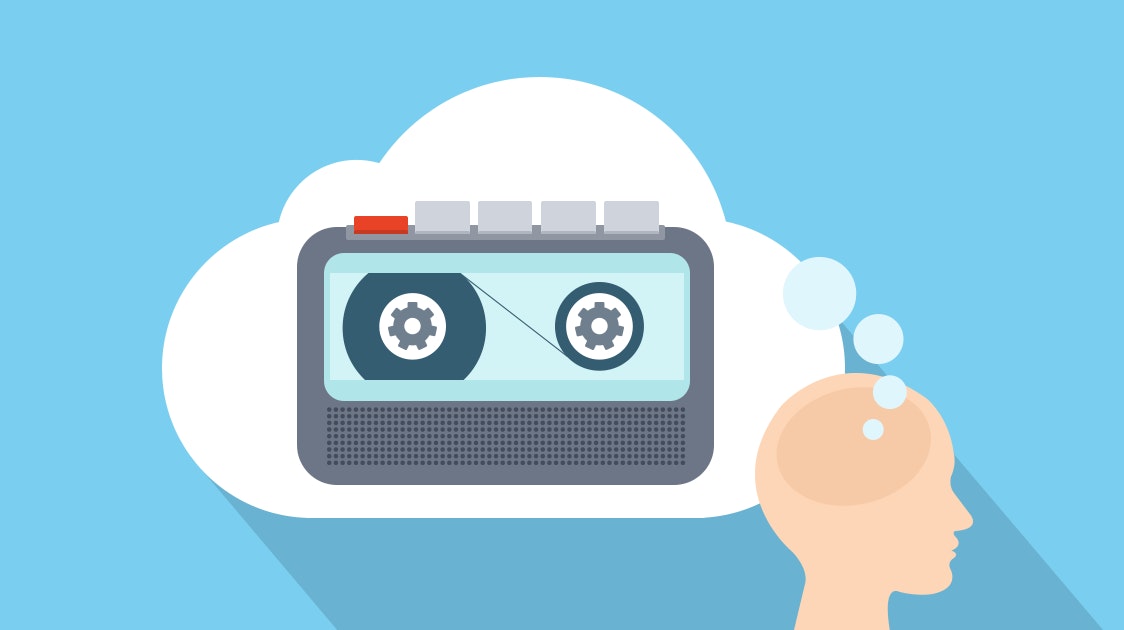Memories are connected moments that coalesce and create the chapters of our lives. When we make a decision, we have a tendency to review the past for reassurance that whatever we are about to do, we’ll be okay.
Daniel Kahneman, Nobel Prize winner and founder of behavioral economics, posited in this TEDTalk that when it comes to buying a product or service, our decisions are based on memories, not experiences.
Here’s a scenario: you go out to dinner with friends. The food is wonderful, the wine is fine, and the environment is just right. Stimulating conversations are flowing, and everyone is happy. Right when you’re about to pay the check, the waiter knocks over your glass and spills wine all over your dessert and pants. Forget about the pants; now you have no wine or dessert. Everything up to this point was perfect—until it wasn’t.
What will you remember when you walk out?
The majority of the experience was blissful, but many of us would remember—and tell our friends—about the spill. If asked to return, we may be hesitant because the memory of the spill overpowers the hour of happiness.
We are hesitant because we naturally focus on our losses rather than our gains—what psychologists have called loss aversion. Most of our decisions are rooted in uncertainty about the future, so memories act as fog lights to help us navigate unknown pathways.
So imagine a customer visits your site, loves everything about you, inquires to support, but doesn’t receive a quick or even thoughtful response? Or worse—no response?
What do you think they’ll do?
Directing your tone and language to create positive, lasting memories for your customers is a staple in support. Not only should the whole experience be good, but most importantly, how that experience ends ought to be good.
Why do we behave like this and why do memories play such an important role? Kahneman calls it “the two selves.” The “experiencing self” is about living in the present; it’s about us trying to treasure every moment because we believe they matter, even though these moments are ultimately fleeting. The “remembering self” is how our lives are written; it’s the one that keeps score and likes endings.
As Kahneman said:
Now, the remembering self does more than remember and tell stories. It is actually the one that makes decisions because, if you have a patient who has had, say, two colonoscopies with two different surgeons and is deciding which of them to choose, then the one that chooses is the one that has the memory that is less bad, and that's the surgeon that will be chosen. The experiencing self has no voice in this choice. We actually don't choose between experiences, we choose between memories of experiences. And even when we think about the future, we don't think of our future normally as experiences. We think of our future as anticipated memories.
Timeliness, empathy, and the right tone and language are essential for helping customers fruitfully, but what ultimately matters is what the customer walks away with: a memory. Ninety-nine percent of the interaction can be wonderful, but the wrong gesture or tone or words can spoil the ending.
First, let’s take a quick dip into the psychology of memory, and then we’ll discuss some ways to apply these insights.
The role of memory in customer support
There are some commonplace notions about memory; we usually describe it as a tape recorder, a computer, a photograph, or a mirror. Indeed, psychologists suspect that our brains are perfect recorders. When we forget something, it means the memory isn’t lost, merely misplaced. The right cue or priming could elicit that memory as if it happened yesterday.
Our minds are seemingly diligent transcribers of our experiences. It’s easy to view memories as a kind of bank where we withdraw and deposit our moments at will—but it isn’t. Our memories shape and are shaped by our sensory experiences, information, and time. Whatever we consciously experience is directly influenced by our past memories, whether it be food, a vacation, or a specific kind of interaction, say, public speaking or calling your internet provider.
It makes sense, then, that when customers expect bad support but receive great support, they feel compelled to talk about it and share it with friends and family. The story is different at last.
So much of what we do is rooted in the pursuit of happiness; it makes sense that customers are quick to leave a business that doesn’t value them. There could be years of trust and loyalty, but like all stories, there’s an ending—an action that turns the page and shuts the book. The ending wraps up the story and packages it into a memory, for good or for ill.
Think about a product or service that you used to use or a restaurant that you used to go to. The reason for that disconnect is because of how the story (an ensemble of experiences) ended and what remains (a bad memory). What an opportunity, then, to provide what’s rare—to be that missing piece and to be responsible for changing hearts and minds.
Build a world-class support team that drives company growth and customer retention.
Focus on key moments
This insight is helpful and can bolster our support endeavors. Empathy is required in conversations to build understanding—the basis to solving problems. Tone and language are the building blocks to a customer’s perception. Memories are targets that are worthy of our attention and energy, because they finalize our efforts and create an association that’s evidence for the emotional experience.
Leonardo Inghiller and Micah Solomon, in Exceptional Service, Exceptional Profit, admonish that we concentrate on key moments:
Concentrate your language efforts on the most vivid, emotionally crucial points in your conversations with customers. Social psychologists, notably Elizabeth Loftus, have proven that human memory radically simplifies our emotional experiences when it files them away for storage; our minds normally retain only the most vivid aspects from each situation, letting go of whatever else might have occurred.
So focus your language efforts on moments that are known to remain vivid in memory: hellos (make yours unusually warm and personal), good-byes (make them wonderful), and recoveries after service failures (yours should be more graceful than anybody else’s).
This explains why Horst Schulz, founder and former CEO of Ritz-Carlton, emphasized the use of phrases like “my pleasure” and “right away.” It’s why, in their language handbook, they coached their employees to remember and address guests by their first names and to always give a friendly farewell. This became the norm in the hospitality business (and when we don’t receive this kind of treatment, it cheapens the experience).
This isn’t to say that all conversations with customers will always be copacetic. There will be disagreements and confusion, but what matters most is how the story comes to an end. What does the customer feel when he or she walks away?
When a product isn’t a fit, some businesses believe that being pushy or overly persuasive is what will win the customer. How does that influence the ending, the memory? Conversely, a business can gladly recommend an alternative. The customer will walk away saying either, “They genuinely wanted to help me,” or “All they wanted was my money.”
Like adjusting your feet while exercising in order to find better balance, there are little adjustments that you can make in your support endeavors that play a crucial role in how customers perceive you. By appreciating the profound impact of memories and how they nudge decisions, we can focus on not only how the destination begins, but how the journey ends.
As the old adage goes, the customer is always right. While there are gray areas to that, it’s unquestionably true that the customer will always remember.







